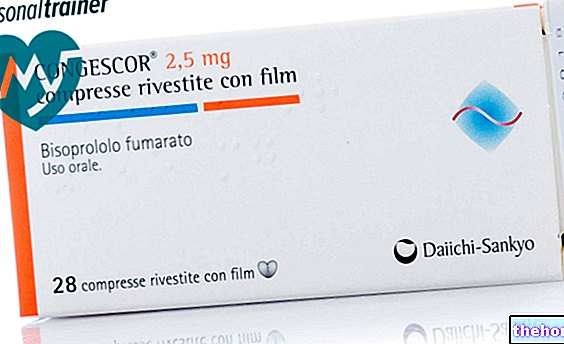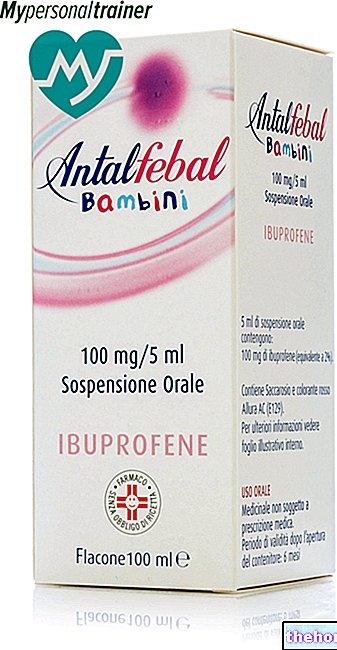Active ingredients: Psyllium
AGIOLAX GRANULATE 100g
AGIOLAX SACHETS OF 5g
Source Package Leaflet: AIFA (Italian Medicines Agency). Content published in January 2016. The information present may not be up-to-date.
To have access to the most up-to-date version, it is advisable to access the AIFA (Italian Medicines Agency) website. Disclaimer and useful information.
01.0 NAME OF THE MEDICINAL PRODUCT -
AGIOLAX GRANULATE
02.0 QUALITATIVE AND QUANTITATIVE COMPOSITION -
100 g of granules contain
Active principles:
- plantain seeds 54.2 g
• senna fruits 6.74 - 13.15 g equivalent to 0.3 g of sennosides calculated as sennoside B.
Excipients: contains sucrose.
For the full list of excipients, see section 6.1.
5 g sachets
One sachet contains
Active principles: - plantain seeds 2.71 g.
• senna fruits 0.33 - 0.65 g equivalent to 0.015 g of sennosides calculated as sennoside B.
Excipients: contains sucrose.
For the full list of excipients, see section 6.1.
03.0 PHARMACEUTICAL FORM -
Granulated.
04.0 CLINICAL INFORMATION -
04.1 Therapeutic indications -
Short-term treatment of occasional constipation
04.2 Posology and method of administration -
The correct dose is the minimum sufficient to produce easy evacuation of soft stools.
It is advisable to initially use the minimum doses provided.
When necessary, the dose can then be increased, but without ever exceeding the maximum indicated.
Jar of 100g, 250g, 400g
Adults:
1-2 teaspoons in the morning before breakfast and in the evening after dinner, according to individual needs. In stubborn cases 2 teaspoons every 6 hours for 1-3 days.
Children over 10 years:
1 teaspoon per day
5 g sachets
Adults:
1-2 sachets in the morning before breakfast and in the evening after dinner, according to individual needs. In stubborn cases 2 sachets every 6 hours for 1-3 days.
Children over 10 years:
1 sachet per day.
Take preferably in the evening.
Be careful not to take the medicine immediately before going to bed; after having ingested it, wait at least one hour before going to bed.
Laxatives should be used as infrequently as possible and for no more than seven days. The use for longer periods of time requires a doctor's prescription after adequate evaluation of the individual case.
Ingest together with an adequate quantity of water (a large glass).
The granules must not be chewed or dissolved, but must be placed on the tongue and then swallowed by drinking a glass of water for each dose: the omission of this last recommendation can cause problems.
A diet rich in liquids promotes the effect of the medicine.
04.3 Contraindications -
Hypersensitivity to the active substances or to any of the excipients.
Laxatives are contraindicated in subjects with acute abdominal pain or of unknown origin, nausea or vomiting, intestinal obstruction or stenosis, rectal bleeding of unknown origin, severe dehydration.
Contraindicated in subjects with difficulty in swallowing or who have pathologies (for example hiatal hernia) or conditions (for example debilitated subjects confined to bed) that involve the risk of regurgitation.
Contraindicated in the presence of atony of the colon or fecaloma.
Contraindicated in children under 10 years of age.
04.4 Special warnings and appropriate precautions for use -
Warnings
The abuse of laxatives (frequent or prolonged use or with excessive doses) can cause persistent diarrhea with consequent loss of water, mineral salts (especially potassium) and other essential nutritional factors.
In severe cases, the onset of dehydration or hypokalemia is possible, which can cause cardiac or neuromuscular dysfunctions, especially in the case of simultaneous treatment with cardiac glycosides, diuretics or corticosteroids.
The abuse of laxatives, especially contact laxatives (stimulant laxatives), can cause addiction (and, therefore, the possible need to gradually increase the dosage), chronic constipation and loss of normal intestinal functions (intestinal atony).
Precautions for use
In children under the age of 12, the medicine can only be used after consulting your doctor.
The treatment of chronic or recurrent constipation always requires the intervention of the physician for the diagnosis, the prescription of the drugs and the surveillance during the therapy.
Consult your doctor when the need for the laxative derives from a sudden change in previous bowel habits (frequency and characteristics of bowel movements) lasting more than two weeks or when the use of the laxative fails to produce effects.
It is also advisable for elderly people or those in poor health to consult their doctor before using the medicine.
During the treatment, ingest a large quantity of water (6-8 glasses) to prevent the onset of intestinal obstruction.
The medicine contains sucrose: patients with rare hereditary problems of fructose intolerance, glucose-galactose malabsorption, or sucrase isomaltase insufficiency, should not take this medicine.
04.5 Interactions with other medicinal products and other forms of interaction -
Laxatives can reduce the time spent in the intestine, and therefore the absorption, of other drugs administered simultaneously orally.
Therefore, avoid ingesting laxatives and other drugs at the same time: after taking a medicine, leave an interval of at least 2 hours before taking the laxative.
04.6 Pregnancy and breastfeeding -
There are no adequate and well-controlled studies on the use of the drug during pregnancy and lactation. Therefore, the medicine should only be used in case of need, under the direct supervision of the doctor, after evaluating the expected benefit to the mother in relation to the possible risk to the fetus or infant.
04.7 Effects on ability to drive and use machines -
Nobody.
04.8 Undesirable effects -
Occasionally: isolated cramping pains or abdominal colic more frequent in cases of severe constipation.
With use of the product, the urine sometimes turns slightly yellow-brown or red. This coloration is simply due to the presence of senna components in the urine and is not clinically significant.
Occasionally flatulence, abdominal distension, gastrointestinal obstruction, fecaloma.
Very rarely, obstruction of the esophagus can occur.
In the following table, within each frequency class, the undesirable effects are listed in descending order of severity.
04.9 Overdose -
Excessive doses can cause abdominal pain and diarrhea, the resulting loss of fluids and electrolytes must be replaced. In this case it is recommended to reduce the dosage.
See also the information in the paragraph "Special warnings and precautions for use" about the abuse of laxatives.
05.0 PHARMACOLOGICAL PROPERTIES -
05.1 "Pharmacodynamic properties -
The alteration of intestinal function is often linked to an insufficiency of the peristalsis, sometimes accompanied by a reduction in the volume of the intestinal contents. The active components of AGIOLAX are able to overcome this double deficiency with synergistic action.
The plantain seeds, thanks to its great hydrophilicity, increases the volume of the intestinal contents thus producing an increase in pressure on the intestinal wall and consequently inducing an increase in peristalsis.
Senna fruit, rich in anthraquinone glycosides, causes an increase in intestinal secretion and an increase in peristalsis.
05.2 "Pharmacokinetic properties -
The anthraquinone glycosides of Senna fruits are absorbed, after hydrolysis, in the small intestine and released again in the colon.
Excretion, as well as via the fecal route, occurs via the urine.
05.3 Preclinical safety data -
Acute toxicity (LD50)
Topo Swiss os> 10 g / Kg, Topo Swiss ip> 0.5 g / Kg; Rat SD os> 5 g / kg, Rat SD ip> 0.5 g / kg.
Toxicity for prolonged administration
Tests carried out in laboratory animals (rats, rabbits, dogs) did not show toxic effects up to a dose of 1 g / kg / day os.
Teratogenesis
No teratogenic effects were found in rats and rabbits.
06.0 PHARMACEUTICAL INFORMATION -
06.1 Excipients -
Talc, gum arabic, cumin essence, sage essence, mint essence, liquid paraffin, solid paraffin, E 172, sucrose.
06.2 Incompatibility "-
None.
06.3 Period of validity "-
3 years.
06.4 Special precautions for storage -
Store below 30 ° C, keep in original packaging to protect from moisture
06.5 Nature of the immediate packaging and contents of the package -
Jar of 100g, 250g, 400g:
Cardboard jar, internally lined with aluminum coated with heat-sealing lacquer, equipped with screw cap and polypropylene undercap. The package leaflet is inserted between the cap and undercap.
5 g sachets:
Polylaminate Paper / Aluminum / PE - Cardboard box
06.6 Instructions for use and handling -
No special instructions.
07.0 HOLDER OF THE "MARKETING AUTHORIZATION" -
Rottapharm S.p.A. - Galleria Unione, 5 - 20122 Milan
08.0 MARKETING AUTHORIZATION NUMBER -
AGIOLAX granules - 100 g jar AIC n. 023714025
AGIOLAX granules - 250 g jar AIC n. 023714013
AGIOLAX granules - 400 g jar AIC n. 023714037
AGIOLAX granules - 6 sachets g AIC n. 023714049
09.0 DATE OF FIRST AUTHORIZATION OR RENEWAL OF THE AUTHORIZATION -
Renewal: June 2010.
10.0 DATE OF REVISION OF THE TEXT -
November 2014




























